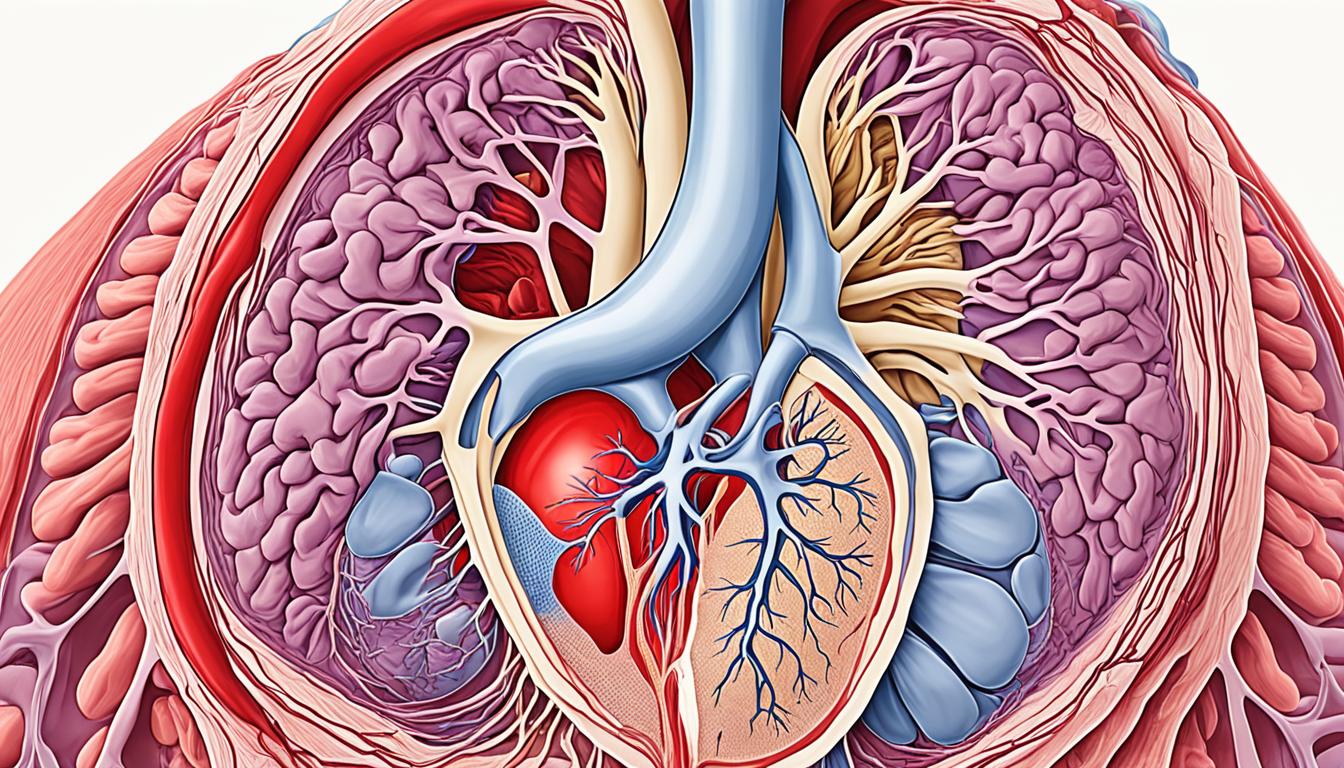Mitral stenosis is a heart problem that makes the mitral valve narrow. This valve controls blood flow between the left atrium and ventricle of the heart. It’s often caused by rheumatic heart disease, atherosclerosis, or birth defects.
People with mitral stenosis may feel out of breath, tired, or have chest pain. Doctors usually find it using echocardiography. In the past, surgery to fix or replace the valve was the main treatment.
Now, new studies show that stem cell treatment and tissue engineering could be better for people born with heart defects.
Key Takeaways:
- Mitral stenosis happens when the mitral valve gets narrow, affecting the heart’s blood flow.
- Rheumatic heart disease, atherosclerosis, and heart defects are some common causes.
- Symptoms vary but often include breathing problems, feeling tired, and chest pains.
- Doctors use echocardiography to diagnose it.
- Surgery was often the treatment choice, but now new methods like stem cells are studied.
Prevalence and Impact of Mitral Stenosis
Mitral stenosis is a common heart issue people have from birth. It affects many people globally. It can be found in 6 to 13 out of every 1000 births. Mitral stenosis is a key issue in the heart health field. It makes up about 40.3% of heart problems.
The problem goes beyond how many people have it. The severe cases can cause a lot of harm and even death.
People with mitral stenosis might face heart problems and failure. They could also have issues with the brain, breathing, and blood clotting. This hurts not just the person, but also their community and the healthcare system. In the U.S., treating this issue costs about $1.4 billion.
We must understand how often and how badly mitral stenosis affects people. Knowing this helps doctors find good ways to treat it early. This can reduce its bad effects and help patients do better.
Treatment Options for Mitral Stenosis
The way we treat mitral stenosis depends on how severe it is and if symptoms are present. Doctors use medicines like beta-blockers to help control symptoms and lower the heart rate. For a less invasive approach, a procedure called percutaneous balloon dilatation might be used. This method enlarges the narrowed mitral valve with a balloon catheter. If the valve is very damaged, patients might need surgery for repair or replacement.
If a mitral valve needs replacing, there are two types of valve options. Mechanical valves, made from strong materials, last a long time. But, they need the patient to take blood-thinning medicine forever to avoid clots. Biological valves, made from animal or human tissue, do not need this medicine. They do not last as long though, so they might need replacing.
The choice of valve depends on a few things, like the patient’s age and health. Younger patients might choose mechanical valves because they last longer. Older patients could go for biological valves to escape regular blood-thinning medicine. It’s important to talk with a heart doctor to get the best plan for you. They will give advice tailored just to you.
Advantages and Considerations of Mechanical Valves vs. Biological Valves
| Mechanical Valves | Biological Valves |
|---|---|
| Longer lifespan | Avoidance of anticoagulation therapy |
| Durable materials | Potential need for future replacement |
| Higher risk of blood clots | Shorter lifespan |
Conclusion
Mitral stenosis can cause many issues. It includes problems like pulmonary hypertension and heart failure. Early diagnosis and treatment are crucial to stop these complications.
Doctors use different methods to treat mitral stenosis. These include medicines, a procedure called percutaneous balloon dilatation, and surgery. Surgeries can either repair or replace the damaged mitral valve.
Looking forward, scientists are exploring new treatments. These include using stem cells and tissue engineering. These methods might improve how we treat mitral stenosis in the future.
It’s important to know the signs of mitral stenosis. If you think you might have it, see a doctor right away. With the right care early on, the risk of complications lowers. This helps people with mitral stenosis live better lives.

